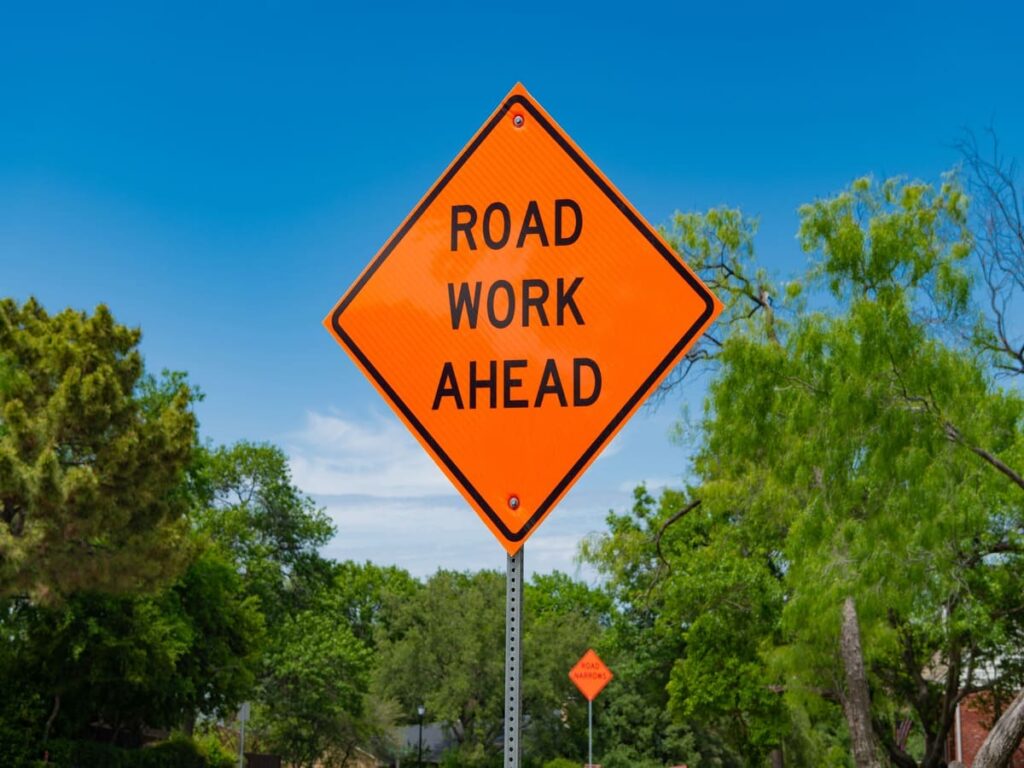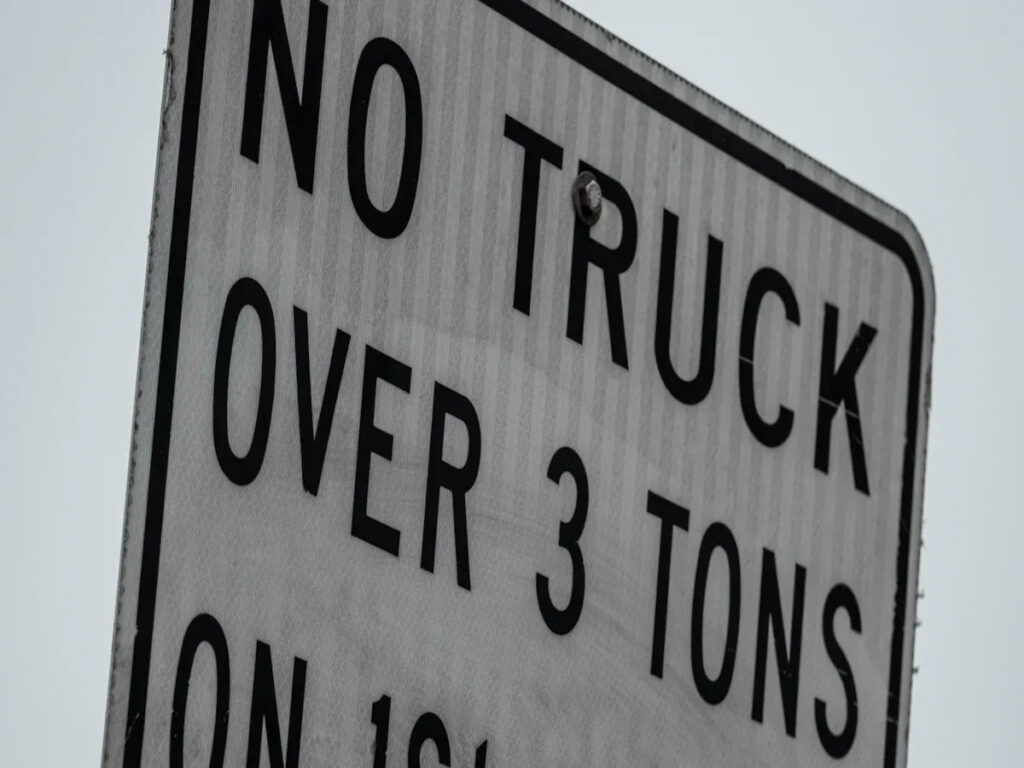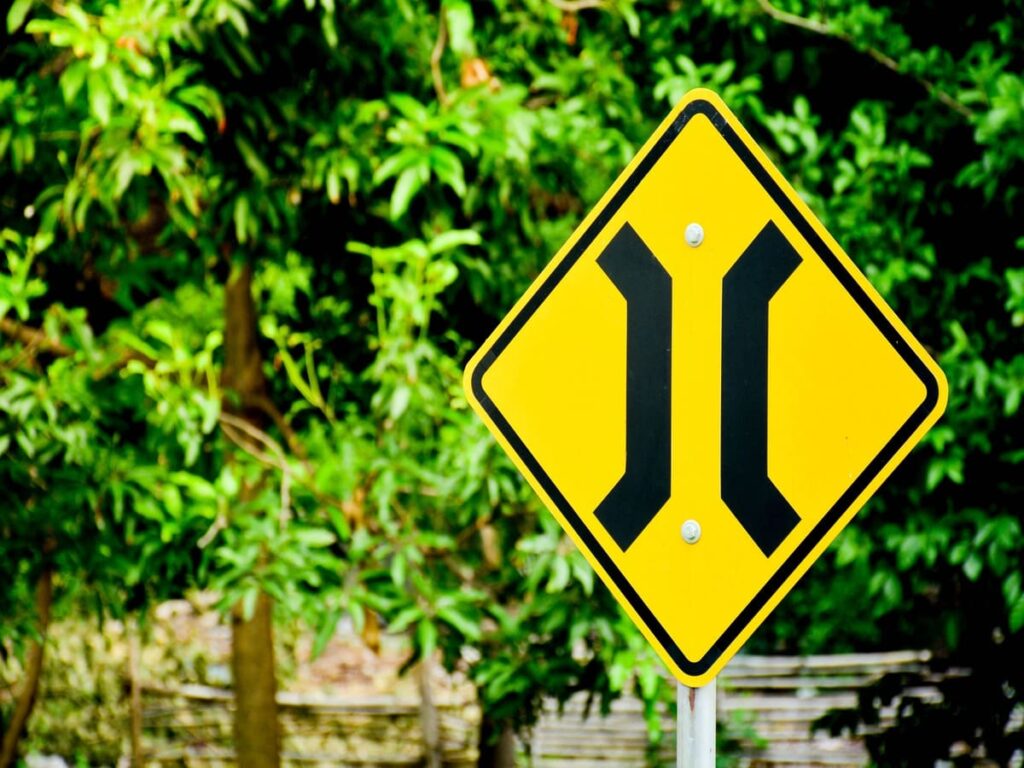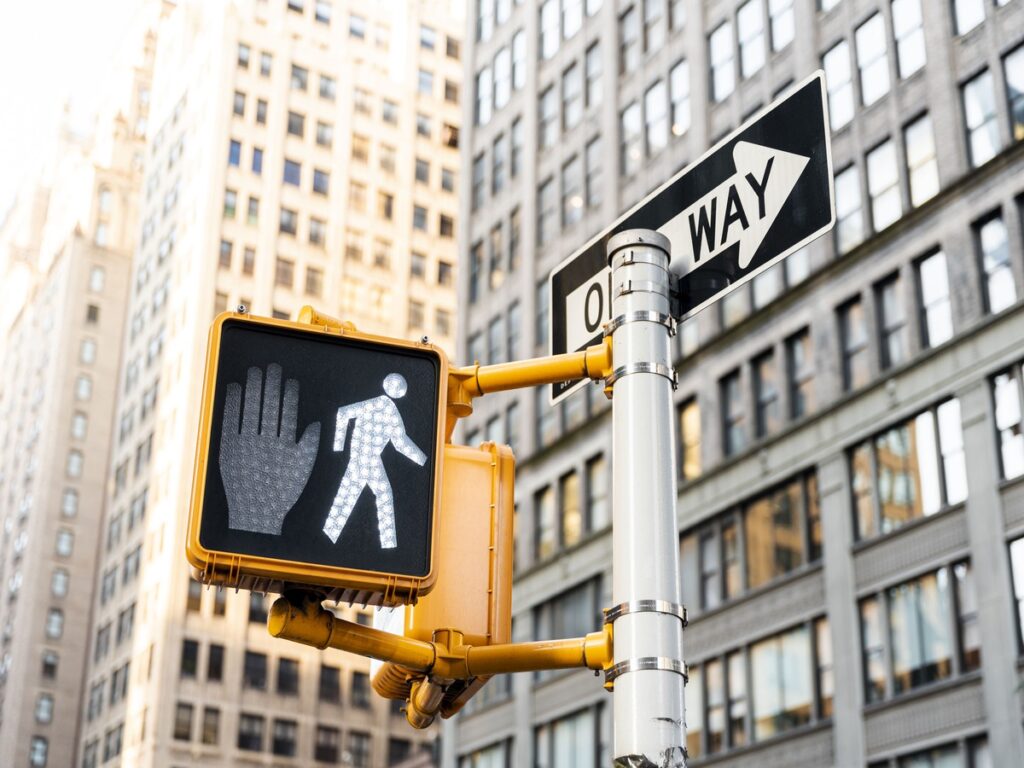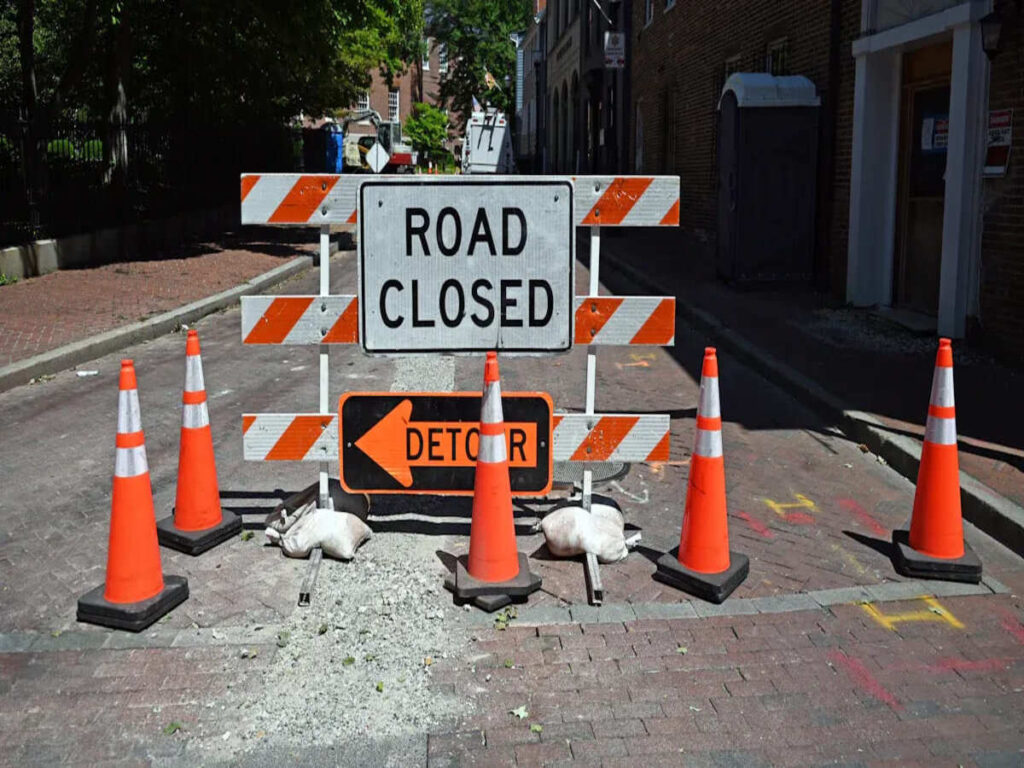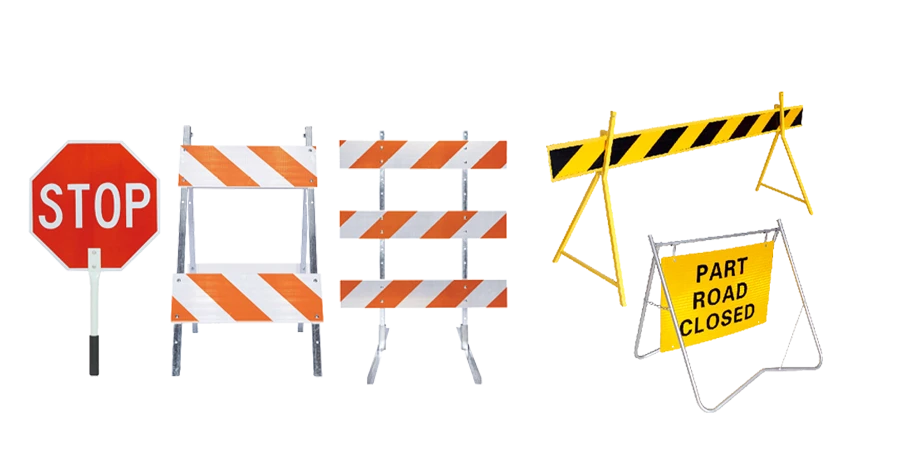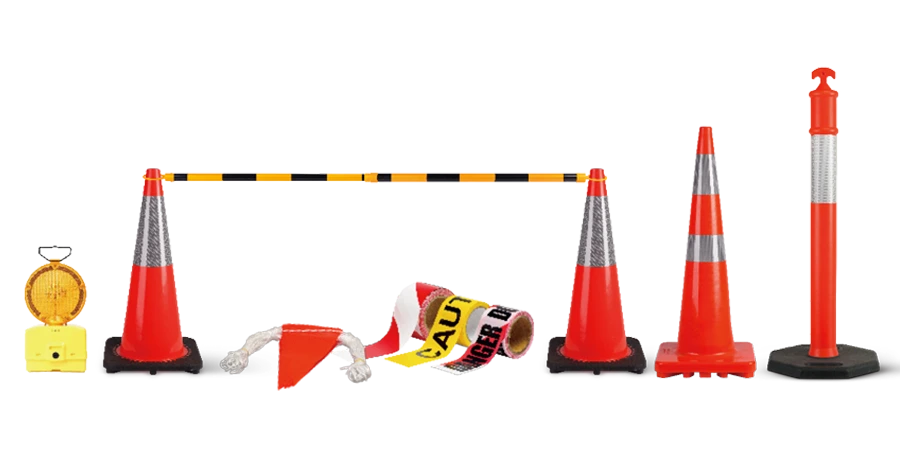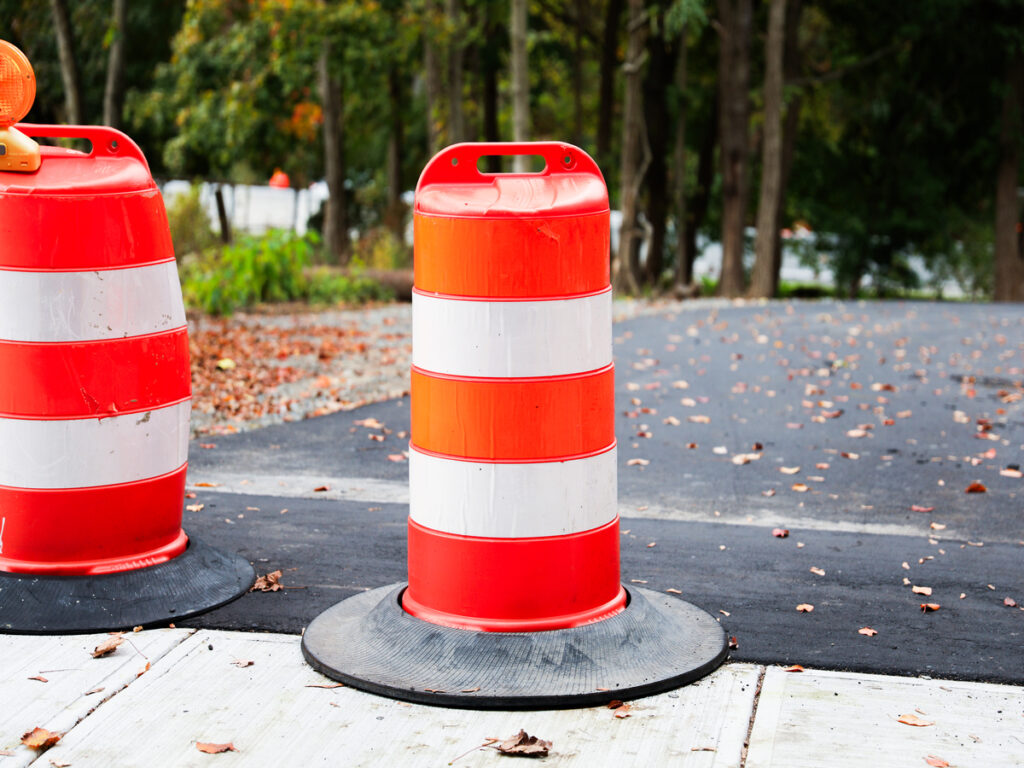
MUTCD rules ensure that traffic devices adhere to safety standards. When considering traffic drums for sale, it’s essential that they meet regulations regarding size, color, y reflectividad. These standards enhance visibility, Ayudando a prevenir accidentes. Utilizing non-compliant equipment can lead to fines or unsafe conditions. Opting for MUTCD-approved products is crucial for the safety of both workers and drivers. Por lo tanto, if you’re purchasing traffic drums, verify that they comply with these regulations to ensure safety and legal adherence.
OPTRAFICO prioritizes safety and compliance with MUTCD regulations. OPTRAFFIC traffic drums for sale are designed to meet all required standards for size, color, y reflectividad, ensuring maximum visibility and safety on the road. Eligiendo MUTCD-approved traffic drums, you not only reduce the risk of accidents but also avoid potential fines and legal issues related to non-compliant equipment.
For more information on choosing the right traffic drum for your project, including safety features and compliance, check out our full guide: Tambores de seguridad: Una guía completa de su papel en la delineación del tráfico y la seguridad vial.
Why MUTCD Compliance Matters When Buying Traffic Drums
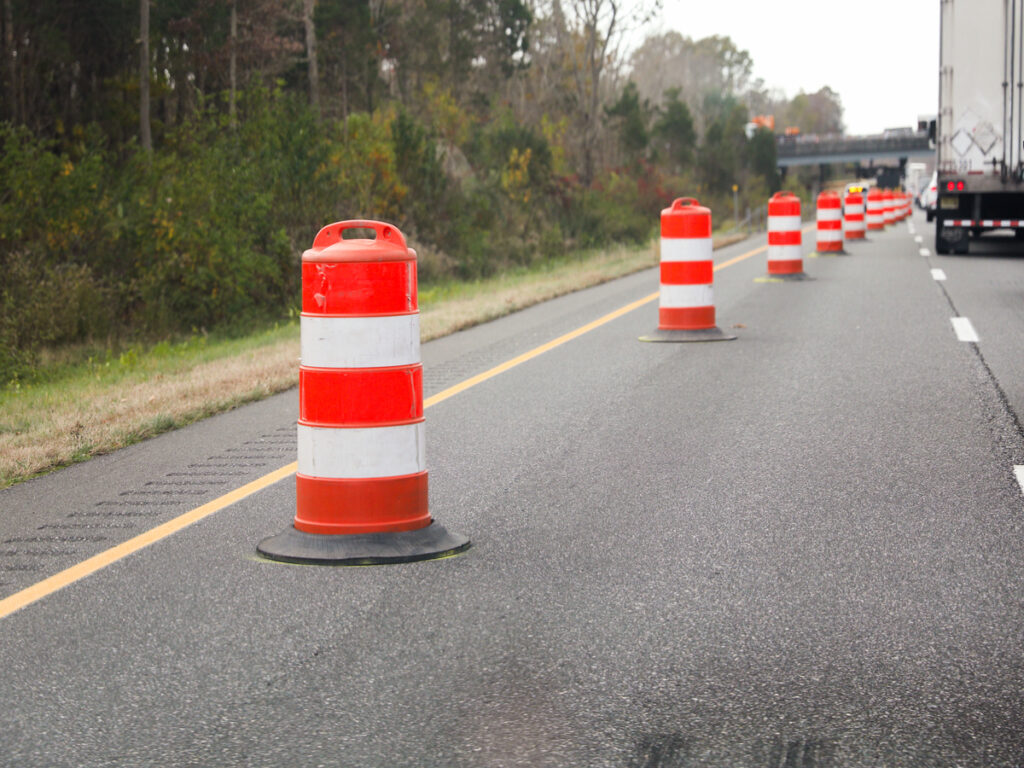
The Role of MUTCD in Traffic Safety Standards
El Manual en dispositivos de control de tráfico uniformes (Muescato) helps keep roads safe. It makes sure traffic devices, like drums, follow clear rules. These rules help drivers and walkers act safely and avoid crashes. Por ejemplo, MUTCD-approved drums use bright colors and reflective parts. This makes them easier to see, even at night or in dim light.
MUTCD rules are based on years of studying traffic and people’s actions. This helps road users quickly understand and react to signs and devices. The table below shows how MUTCD rules improve safety:
| Descripción de la evidencia | Puntos clave |
|---|---|
| Uniform traffic devices make roads safer for everyone. | They guide people to act safely and prevent crashes. |
| MUTCD creates clear messages based on years of research. | This helps people move safely and easily on the roads. |
| MUTCD rules improve safety for all road users. | They create a system of signs and markings that work well. |
Legal and Safety Risks of Non-Compliant Traffic Drums
Using drums that don’t meet MUTCD rules can cause big problems. You might face fines or legal trouble if your drums aren’t approved. Peor, unsafe drums may not be visible or stable enough. This can lead to accidents, lesiones, o incluso muertes.
History shows how safety rules have changed to fix these problems. Por ejemplo, el Federal-Aid Highway Act of 1944 made states approve traffic devices for safety. Más tarde, President Truman’s Highway Safety Conference in 1946 pushed for clear rules to cut down on traffic deaths.
Key Considerations for Contractors and Municipalities
If you’re a contractor or work for a city, Sigue las reglas de Mutcd. Approved drums keep your projects safe and protect you from lawsuits. When buying drums, check for labels, certifications, and MUTCD approval. Good sellers usually give proof that their products meet the rules.
By following MUTCD rules, you meet the law and make roads safer. Always pick quality over cheap prices to keep everyone safe.
What Makes a Traffic Drum MUTCD-Compliant?
When buying traffic drums, make sure they follow MUTCD rules. Estas reglas cubren el tamaño, reflectividad, color, y estabilidad. Proper drums make work zones safer and help prevent accidents.
Requisitos de tamaño y altura
Traffic drums must meet size and height rules for visibility. Most approved drums are at least 36 pulgadas de alto. This height helps drivers see them from far away. It works even in bad weather or heavy traffic. The drum’s width is also important. It should be wide enough to stay stable but not block traffic.
The drum’s material is key to meeting these rules. MUTCD says the drum must be strong and flexible. It should also resist sunlight damage with UV stabilizers. The top of the drum should hold signs for different uses.
| Criteria Type | Requirements |
|---|---|
| Propiedades del material | Drum body must be strong, flexible, and orange; UV stabilizers needed for weather; top must hold signs. |
| Stability Requirements | Drums must stay in place when weighted; specific ballast materials required; anti-roll feature needed. |
Estándares de láminas reflectantes
Reflective sheeting is very important for traffic drums. MUTCD requires at least four reflective bands on each drum. These bands must alternate between white and orange. They should be spaced evenly to be seen from all sides.
Studies show better reflectivity makes drums easier to see. Por ejemplo, ASTM Type III sheeting adds 53 feet of visibility compared to weaker materials. This extra distance can prevent accidents, especialmente de noche o con tenue luz.
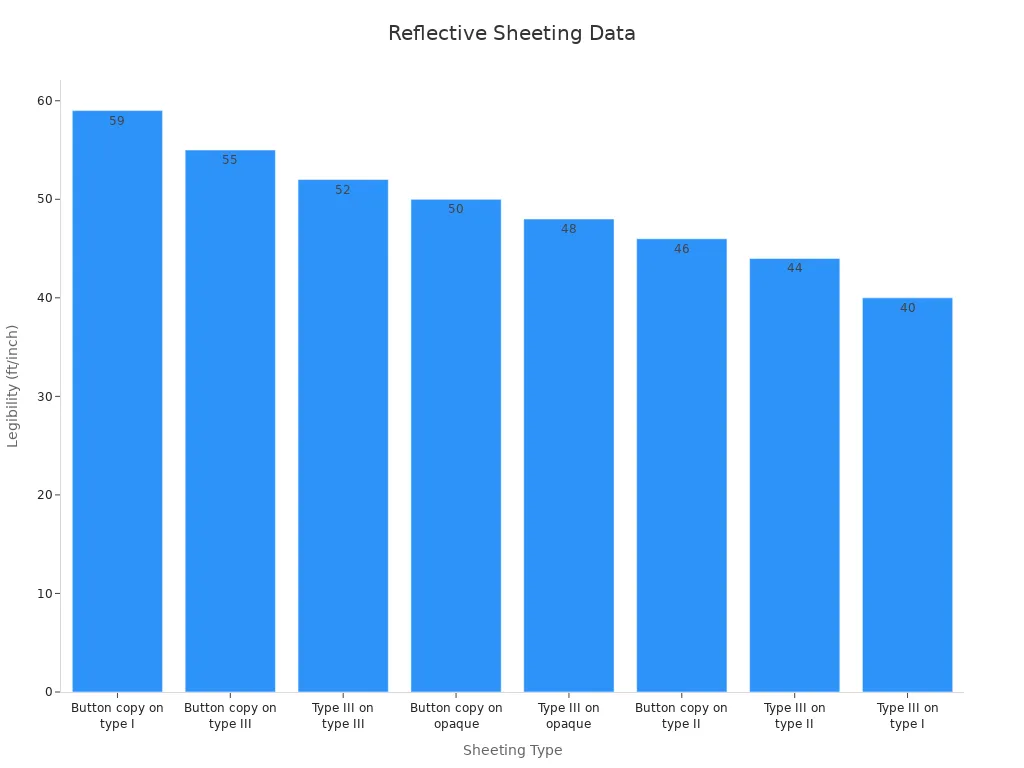
| Tipo de láminas | Distancia de legibilidad (ft/inch) |
|---|---|
| Button copy on type I | 59 ft/inch |
| Button copy on type III | 55 ft/inch |
| Type III on type III | 52 ft/inch |
Reflective bands improve visibility and meet MUTCD rules. Always check the type and placement of bands before buying drums.
Color Visibility and Contrast
The drum’s color is more than just for looks. MUTCD says the drum must be highway orange. This bright color is easy to see during the day. It also works well with reflective bands at night. Juntos, orange and white make the drum stand out.
Non-reflective areas on the drum should be small. This keeps the focus on the reflective bands. The contrast between orange and white helps drivers spot the drum quickly, Incluso desde muy lejos.
By following these color and contrast rules, traffic drums guide drivers and keep work zones safe.
Stability and Base Requirements
When picking traffic drums for sale, stability is very important for safety. Drums must stay steady in strong winds or when cars pass by. A stable drum helps prevent accidents and keeps work zones safe.
To follow Muescato normas, traffic drums need to meet these stability and base rules:
- Drums must be made of tough, bendable materials that meet Federal Color Standards. These materials should have UV stabilizers to stop weather damage and fading.
- Drums need proper weights to stay in place. They shouldn’t tip over from wind or passing cars. Sand or recycled tire collars are good options for weights because they’re safe and steady.
- Drums must have an anti-roll design. This stops them from rolling into traffic if they fall over.
- Drums should hold small signs securely, even if they get hit. This keeps the signs useful in tough conditions.
Muescato Section 6F.67 explains why weighted drums are important for safety. Choosing drums that meet these rules ensures they work well in real-life situations.
Consejo: Check the base design and weights before buying drums. A strong base makes a big difference in safety.
Proper Labeling and Certification
Traffic drums must have proper labels and certifications to meet Muescato normas. These markings prove the drums are safe and ready for work zones.
Look for these key details on traffic drums:
- Manufacturer Information: The drum should show the maker’s name or logo. This helps track where it came from.
- Marcas de cumplimiento: Certified drums have labels or stamps showing they meet Muescato normas. These markings prove the drum passed tests for size, reflectividad, y estabilidad.
- Especificaciones de material: Some drums list their materials, like UV stabilizers or strong plastics. This helps you check if they can handle tough weather.
Certified drums follow the law and give you peace of mind. They work as expected and lower the chance of accidents or fines.
Nota: Always ask suppliers for proof of certification. Good manufacturers will gladly share this information.
By focusing on stability, etiqueta, and certifications, you can choose the right traffic drums. These features make sure they’re safe, confiable, y reunirse Muescato estándares.
Common Mistakes Buyers Make When Choosing Traffic Drums
Only Thinking About Price
Picking traffic drums for sale just because they are cheap can be risky. Saving money might sound good, but cheap drums often don’t last or follow Muescato normas. Non-compliant drums can cause accidents or lead to fines.
Cheaper drums are usually made with weak materials. These materials can break, desteñir, or become unstable in bad weather. This makes them unsafe for work zones. Spending more on strong, Muescato-approved drums is safer and smarter in the long run.
Consejo: Don’t pick the cheapest option. Choose drums that meet Muescato rules and are built to last.
Forgetting About Reflectivity
Reflectivity helps drivers see traffic drums, Especialmente por la noche. Ignoring this feature can make roads less safe. Muescato says drums need reflective bands placed in specific ways. Without these, drivers might not notice the drums, causando accidentes.
Some buyers think all traffic drums for sale have proper reflective bands. But many cheap drums use poor materials that don’t meet safety standards. Always check the type of reflective sheeting before buying.
Recordatorio: Buscar ASTM-certified reflective bands. Good reflectivity keeps roads safer and meets Muescato normas.
Skipping Material Strength
Some buyers forget to check if the drum’s material is strong. Weak materials can crack, desteñir, or break in bad weather or after impacts. Con el tiempo, these drums become unsafe to use.
Strong materials like HDPE or LDPE are best for traffic drums. They resist sunlight, impacto, and tough weather. Choosing strong drums saves money and keeps work zones safe.
Nota: Ask about the drum’s materials before buying. Strong materials last longer and work better in real-life conditions.
Thinking All Drums Follow the Rules
Some buyers think all traffic drums for sale meet Muescato normas. This mistake can cause safety problems and legal trouble. Not all drums are made to follow these strict rules. Some lack proper labels, while others fail in size, reflectividad, or stability.
Important: Don’t assume drums are compliant. Always check their labels and certifications.
Here’s why some drums don’t meet the rules:
- No Certification: Some makers skip certification to save money. These drums may not be safe.
- Weak Materials: Non-compliant drums often use cheap materials that break or fade quickly.
- Wrong Reflective Bands: Some drums don’t have enough reflective bands or use poor ones. This makes them hard to see at night.
- Bad Sizes: Drums that are too small or narrow aren’t stable or visible enough in busy areas.
To avoid buying unsafe drums, check these things:
- Maker’s Label: Find the maker’s name and proof they follow Muescato normas.
- Bandas reflectantes: Make sure the bands are the right type and placed correctly.
- Materiales fuertes: Check if the drum is made from tough materials like HDPE or LDPE.
- Certificaciones: Ask for papers that prove the drum meets Muescato estándares.
Consejo: Good sellers will show proof and answer your questions. If they can’t, it’s a warning sign.
Siguiendo estos pasos, you’ll buy drums that are safe, fuerte, and follow Muescato normas.
Your MUTCD Traffic Drum Compliance Checklist
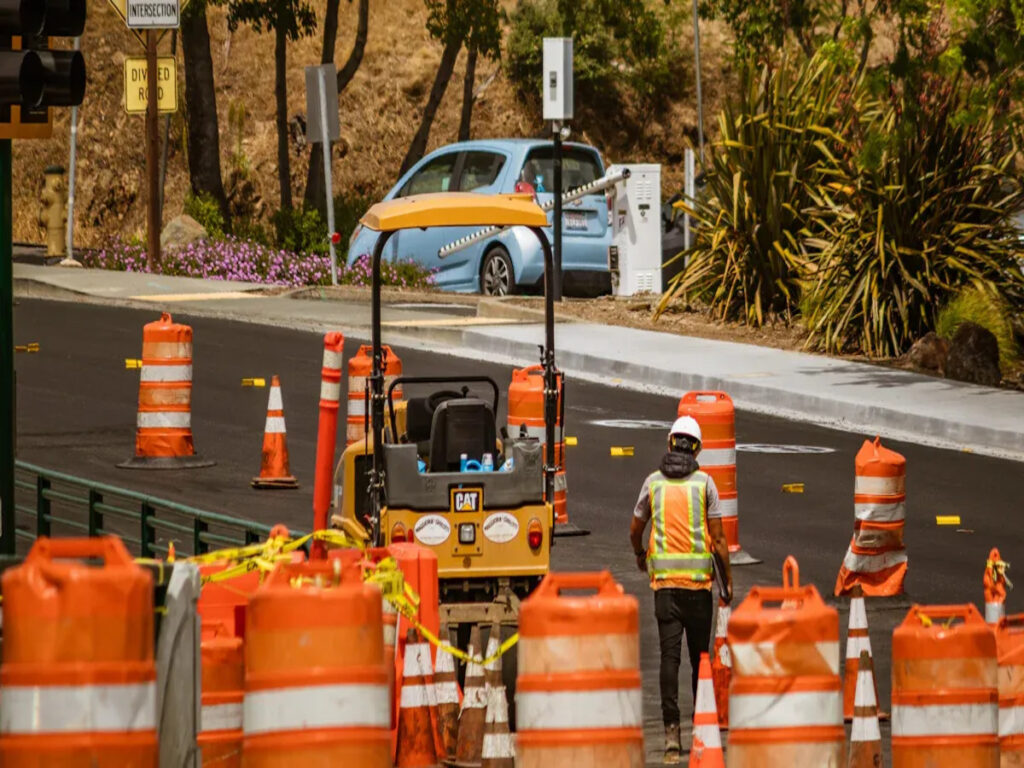
Check Size and Shape
Traffic drum size is key for safety and stability. Muescato rules set specific height and width standards for work zones.
- Altura: Drums must be at least 36 pulgadas de alto. This height helps drivers see them from far away, Incluso en mal tiempo o mucho tráfico.
- Width: The drum should be wide enough to stay steady but not block traffic. A wider base stops it from tipping over in strong winds or near passing cars.
Consejo: Measure the drum’s height and width before buying. Compare these sizes to Muescato rules to make sure they match.
Inspect Reflective Bands and Visibility
Reflective bands make drums easy to see at night or in dim light. Muescato sets rules for the number, type, and placement of these bands.
- Number of Bands: Drums need at least two reflective bands. These bands should alternate between white and orange for better visibility.
- Type of Sheeting: Use ASTM-certified sheeting like Type III or Type V. These types reflect light better than cheaper materials.
- Colocación: Bands must wrap around the drum evenly. This ensures they’re visible from all sides.
| Tipo de láminas reflectantes | Distancia de visibilidad (pie) | MUTCD Approved |
|---|---|---|
| Tipo I | 50 | ❌ |
| Tipo III | 100 | ✅ |
| Type V | 120 | ✅ |
Recordatorio: Check the bands for damage or fading. Worn-out bands don’t reflect well and might not meet Muescato normas.
Confirm the Right Color
The drum’s color isn’t just for looks—it’s a safety rule. Muescato says drums must be highway orange, which stands out in all lighting.
- Body Color: The drum should be bright orange. This makes it easy to see during the day.
- Contrast with Bands: The orange body must stand out against the white reflective bands. This mix improves visibility, Especialmente por la noche.
Nota: Don’t use drums with faded or dull colors. Sunlight can fade orange over time. Choose drums made with UV-protected materials to keep the color bright.
Siguiendo esta lista de verificación, you’ll pick drums that meet Muescato normas. This keeps everyone safe and avoids fines or legal trouble.
Check Drum Stability and Weight
A traffic drum must stay steady to keep work zones safe. If it tips over, it can cause danger for drivers and workers. Antes de comprar, check the drum’s base design and weight.
Here’s what to look for:
- Diseño base: Choose drums with wide bases that stop rolling. This design keeps the drum from moving into traffic if knocked over. It also stays upright in strong winds or near fast-moving cars.
- Opciones de peso: Drums need weights to stay in place. Common choices include sandbags, bases llenas de agua, or tire collars. Each has good and bad points:
- Sacos de arena: Simple to use but might move if not secured well.
- Water-filled Bases: Handy but can freeze in cold weather.
- Recycled Tire Collars: Strong and heavy, offering great stability.
- Resistencia del material: The base should be made of tough materials like rubber or strong plastic. These materials last longer and handle wear and tear.
Consejo: Push on the drum’s top to test its stability. A good drum should stay upright without shaking.
| Base Feature | Por qué es importante | Best Choice |
|---|---|---|
| Wide Base | Stops tipping and rolling | Anti-roll design |
| Weighted Ballast | Keeps drum steady in strong winds | Recycled tire collars |
| Materiales duraderos | Handles damage and wear | Rubber or strong plastic |
By checking these features, you’ll pick drums that work well in real-life situations.
Look for Labels and Certifications
Labels and certifications prove a traffic drum meets Muescato normas. These markings show the drum is safe and legal to use.
Here’s what to check:
- Manufacturer Name: The drum should show who made it. This helps you trace the product if needed.
- Marcas de cumplimiento: Look for stamps or labels showing the drum meets Muescato normas. These markings prove the drum passed tests for size, reflectividad, y estabilidad.
- Material Details: Some drums list their materials, like UV-protected plastics. This helps you know if the drum can handle outdoor conditions.
Nota: Drums without labels might not follow Muescato normas. Always ask the seller for proof of compliance.
| Labeling Requirement | Why It’s Needed | Ejemplo |
|---|---|---|
| Manufacturer Name | Shows who made the drum | “ABC Traffic Solutions” |
| Marcas de cumplimiento | Proves it meets Muescato normas | “MUTCD Approved” stamp |
| Material Details | Checks durability and safety | “UV-Protected Plastic” |
By checking labels and certifications, you’ll choose drums that are safe and follow the rules. Always pick quality products to protect workers and drivers.
Where to Find MUTCD-Compliant Traffic Drums for Sale
Picking Trustworthy Suppliers
Getting traffic drums for sale from a good supplier is important. It ensures the drums meet Muescato rules and are high quality. Start by looking for companies with experience in traffic safety gear. Choose suppliers who make strong drums using materials that resist impacts. These drums should also have UV stabilizers to handle bad weather and keep their bright orange color.
Good suppliers often offer extra help. Por ejemplo, they might guide you on how to set up traffic systems. This can save time and prevent mistakes during installation. Always read customer reviews to see if the supplier is reliable. Positive reviews show that other buyers trust their products.
What Certifications to Ask For
Antes de comprar, ask for proof that the drums follow Muescato normas. These papers should confirm the drum’s size, reflectividad, and stability meet standards. Look for labels or stamps on the drum showing it passed testing. This proves the drum is safe and legal to use.
Ask the supplier for detailed product info. This should include details about the drum’s materials, like flexibility and weather resistance. Make sure the drum has four reflective bands in the right colors. Having proper documents ensures the drum is compliant and protects you from legal trouble.
Online vs. Local Suppliers: What to Consider
Deciding between online and local suppliers depends on your needs. Online shopping has many benefits. You can quickly compare prices and features from different sellers. This saves time since you don’t need to visit stores. Many online sellers also provide guides and support to help with setup.
| Ventaja | Descripción |
|---|---|
| Comparación de precios | Compare prices and features from many sellers easily. |
| Convenience | Shop without leaving home or contacting multiple stores. |
| Extra Help | Online sellers often include setup guides and technical support. |
Proveedores locales, sin embargo, let you check the traffic drums for sale in person. This helps ensure they meet Muescato estándares. They may also deliver faster for urgent projects. But local stores might have fewer options than online shops.
Consejo: Use both options wisely. Research online for prices and features, then visit local stores to check quality before buying.
MUTCD rules are important for safety and legal reasons. Use the checklist to pick traffic drums that follow these rules. Choosing good quality over low price keeps workers and drivers safe. Barato, non-compliant drums might cost less now but can cause fines or accidents later.
When buying traffic drums for sale, pick ones that are safe and strong. Always check for proper labels and materials before deciding. Safe roads begin with using the right tools.
Preguntas frecuentes
What does MUTCD compliance mean for traffic drums?
MUTCD compliance means traffic drums follow federal safety rules. These rules include size, color, reflectividad, y estabilidad. Approved drums are easier to see and help prevent accidents. Always check for labels or certifications to ensure compliance.
Consejo: Buscar “MUTCD Approved” on the drum or ask the seller for proof.
How can I check if a traffic drum is MUTCD-compliant?
Look at the drum’s height, color, y bandas reflectantes. Check for the maker’s label and certification. Ask the seller for documents to confirm it meets the rules. Non-compliant drums often lack markings or use weak materials.
Recordatorio: Always request ASTM-certified reflective sheeting and proof of compliance.
Why do traffic drums need reflective bands?
Reflective bands help drivers see drums at night or in dim light. MUTCD requires white and orange bands to improve visibility. These bands help drivers notice drums from far away, Reducción de accidentes.
Nota: Faded or damaged bands make drums harder to see. Replace worn-out drums right away.
Can traffic drums be made from any material?
No, MUTCD-approved drums must use strong materials like HDPE or LDPE. These materials resist impacts, luz del sol, y mal tiempo. Weak materials can break or fade, making the drum unsafe.
Consejo: Ask the seller about the drum’s materials before buying.
Are all traffic drums sold MUTCD-compliant?
Not all traffic drums for sale meet MUTCD rules. Some are the wrong size, lack reflectivity, or aren’t stable. Always check for labels, certifications, and compliance markings before buying. Non-compliant drums can cause fines or unsafe conditions.
Important: Don’t assume compliance. Always verify the drum’s specs and certifications.

